Weak, wet, or sagging roof decking can cause leaks, mold, and costly repairs but you don’t have to face that alone. Regular inspections, proper attic ventilation, and timely repairs or section replacements stop small issues from becoming big problems. Adding ridge or soffit vents and fixing leaks at the first sign protects both your roof and your health. With simple steps now, you keep your home safe without a massive bill later.
But here’s the good news: you don’t need to be a roofer to spot the problem early.
- Inspect at least twice a year – Look in the attic or on the roof for signs of soft spots, mold, water stains, or sagging decking.
- Improve attic ventilation – Adding ridge and soffit vents keeps decking dry and prevents wood rot .
- Clean gutters and remove debris – Regularly clear leaves and twigs to stop water buildup and reduce decking damage.
- Fix leaks early – Patch small leaks with roofing cement or sealants, then monitor for recurring issues.
- Support or replace weakened boards – For sagging or rot, reinforce with new support beams or replace damaged sections with quality plywood or OSB.
- Waterproof exposed decking – After repair, apply sealant or waterproof membrane to protect against moisture.
- Use quality materials – Choose plywood, OSB, or composite boards rated for local weather and load conditions.
- Know when to call a professional – If damage is large (e.g., more than 2–3 ft²), involves rot, mold, or structural issues, hire a licensed roofer.
What Exactly Is Roof Decking and What Does It Do?
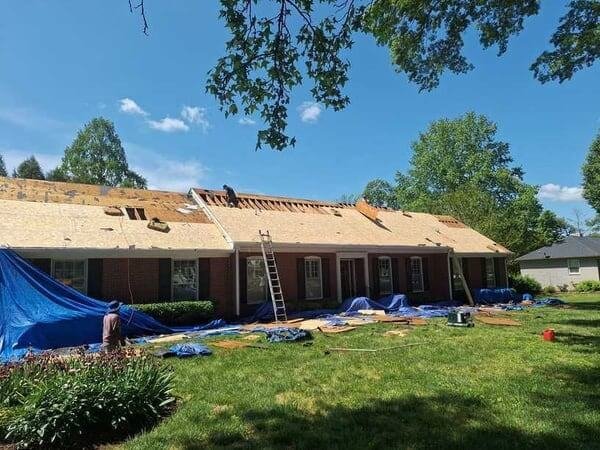
Roof decking (also called sheathing) is the flat surface that sits between your roof’s structural supports and the roofing materials above. It’s what your shingles are nailed into. Think of it as the “floor” your roof walks on.
But roof decking isn’t just there for support. It plays a few critical roles:
- Structural stability: Decking ties together your trusses or rafters to form one strong unit.
- Load distribution: It spreads the weight of snow, wind, or a contractor walking across your roof.
- Nail base: Shingles and underlayment need something to attach to and that’s the decking.
- Moisture barrier support: Decking gives you a continuous surface for waterproofing materials.
Pro Tip: Even a brand-new shingle roof can fail early if the decking underneath is weak or damaged.
What Materials Are Used for Roof Decking?
Not all decking is created equal. The material used depends on the climate, budget, and roof design. Here are the most common types used today:
| Type of Roof Decking | Material | Common Thickness | Best For |
| Plywood | Wood | 3/8″ to 3/4″ | Most residential roofs |
| OSB (Oriented Strand Board) | Engineered Wood | 7/16″ | Budget-friendly homes |
| Plank Decking | Wood boards | 1″ x 6″ or 1″ x 8″ | Older homes and barns |
| Concrete | Reinforced Concrete | N/A | Commercial/flat roofs |
| Metal Decking | Corrugated Steel | N/A | Industrial and commercial roofs |
OSB vs Plywood: Which One’s Better?
Most modern homes use either OSB or plywood. They look similar but act differently:
| Feature | OSB | Plywood |
| Cost | Cheaper | More expensive |
| Moisture resistance | Swells when wet | Holds shape better |
| Strength | Strong but brittle | More flexible under stress |
| Weight | Heavier | Lighter |
Expert Insight: In humid areas or homes near the coast, plywood often holds up better. OSB works well in dry zones or for budget builds.
What Are the Benefits of Roof Decking?
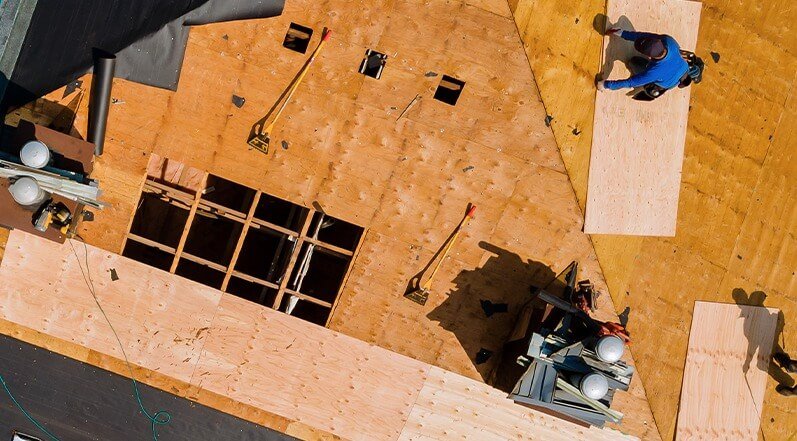
Roof decking may be hidden from view, but it’s one of the most important parts of your entire roofing system. It supports your shingles, holds everything in place, and gives your roof the strength it needs to do its job.
Let’s break down the key benefits.
1. Gives Your Roof a Solid Base
Your shingles, underlayment, and flashing all need something strong to hold onto. Decking creates that solid, flat surface. Without it, your roof can’t stay sealed or secure.
Think of it like a subfloor, just for your roof. No strong base means no stable roof.
2. Supports Heavy Loads
Snow, rain, fallen branches, and even workers your roof takes a beating. Decking spreads all that weight across your structure evenly, preventing sagging and structural damage.
3. Extends Roof Lifespan
When your decking is solid and dry, it helps your whole roof last longer. It stops leaks, prevents mold, and keeps your shingles firmly attached, even in strong winds.
4. Improves Energy Efficiency
Good decking helps your attic stay cooler in summer and drier in winter. This keeps your indoor temperature more stable and lowers your energy bills over time.
5. Boosts Safety and Code Compliance
Most roofing warranties and local building codes require decking that’s solid and up to spec. If your decking is too thin or damaged, you could fail inspection or lose warranty coverage entirely.
Always ask your roofer if your deck meets the manufacturer’s requirements. It matters more than you think.
What Are the Different Types of Roof Decking Systems?
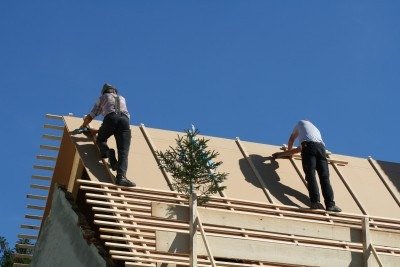
Beyond materials, there are three main decking systems you’ll find in homes:
1. Open Decking (Plank Style)
If your home was built before the 1970s, there’s a good chance it has open plank decking. This system uses long wooden boards, usually 1×6 or 1×8 nailed with space between them. Instead of forming a solid, continuous surface, the boards are spaced out slightly, almost like slats on a fence.
Key Features:
- Spacing between boards: You’ll see gaps between each board sometimes up to an inch wide. Back when wood shake shingles were popular, this was considered normal.
- Strong individual boards: These planks are made of solid wood and can last for decades if kept dry.
Pro Tip: Don’t skip re-sheeting if your home has open plank decking. Even if the wood seems solid, modern warranties require solid decks underneath.
2. Closed Decking (Sheet Style)
This is the most common roof decking system used in homes built after the 1980s and it’s still the standard today.
Closed decking (also called solid sheet decking) is made of large wood panels, typically OSB (Oriented Strand Board) or plywood. These sheets are usually 4 feet by 8 feet in size and are installed side by side to form one continuous, flat surface over the entire roof frame.
Key Benefits:
- Seamless support: Roofing materials, underlayment, and fasteners stay secure on a smooth, stable surface.
- Better insulation performance: Closed decking minimizes gaps where heat or cold can sneak in.
- Moisture protection: When sealed properly, closed decks provide excellent defense against water infiltration.
Closed decking is now required by most roofing manufacturers to validate your shingle warranty. If the decking is warped, rotted, or has gaps your warranty could be denied.
3. Tongue and Groove Decking
Tongue and groove decking is the elegant cousin in the world of roof decking systems. It’s most often found in homes where the decking will also serve as the ceiling, like in vaulted ceilings or exposed beam designs.
This system uses boards with interlocking edges: a “tongue” on one side and a matching “groove” on the other. When fitted together, these create a tight, seamless joint that is both strong and visually appealing.
Key Benefits:
- Structural strength: The interlocking design prevents warping and shifting over time.
- Visual appeal: If the underside of your roof is visible from inside the house, tongue and groove decking provides a warm, natural wood ceiling.
- Durability: When properly installed and sealed, this decking can last 50+ years.
However, tongue and groove decking is more expensive and labor-intensive to install than standard OSB or plywood. It’s usually reserved for special architectural styles rather than
Why Does Roof Decking Fail?
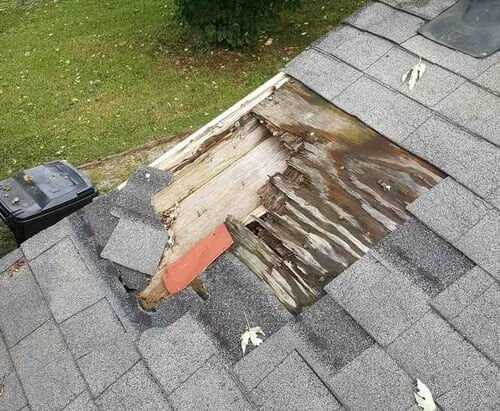
Even the best roofs can run into problems when the decking underneath gives out. Here are the most common reasons decking fails:
1. Moisture Damage
Water is decking’s worst enemy. If leaks go unnoticed, the wood rots and softens.
2. Pest Infestation
Termites or carpenter ants can eat away at wooden decking.
3. Age and Wear
Over time, even untreated wood naturally degrades.
4. Improper Ventilation
Trapped moisture in the attic can lead to condensation on the underside of decking.
5. Overloading
Snow buildup or walking on brittle boards can cause cracking or sagging.
How Do You Know If Your Roof Decking Needs Replacing?
You usually can’t see the decking from outside but there are signs that give it away.
Warning Signs:
- Sagging spots in your roofline
- Leaks or water stains on ceilings
- Musty smell in your attic
- Roof feels spongy when walked on
- Mold growth or soft insulation near the attic
Contractor Tip: During a full roof replacement, most pros inspect decking from inside the attic or once shingles are removed. That’s the best time to spot hidden issues.
What Happens During Roof Decking Replacement?
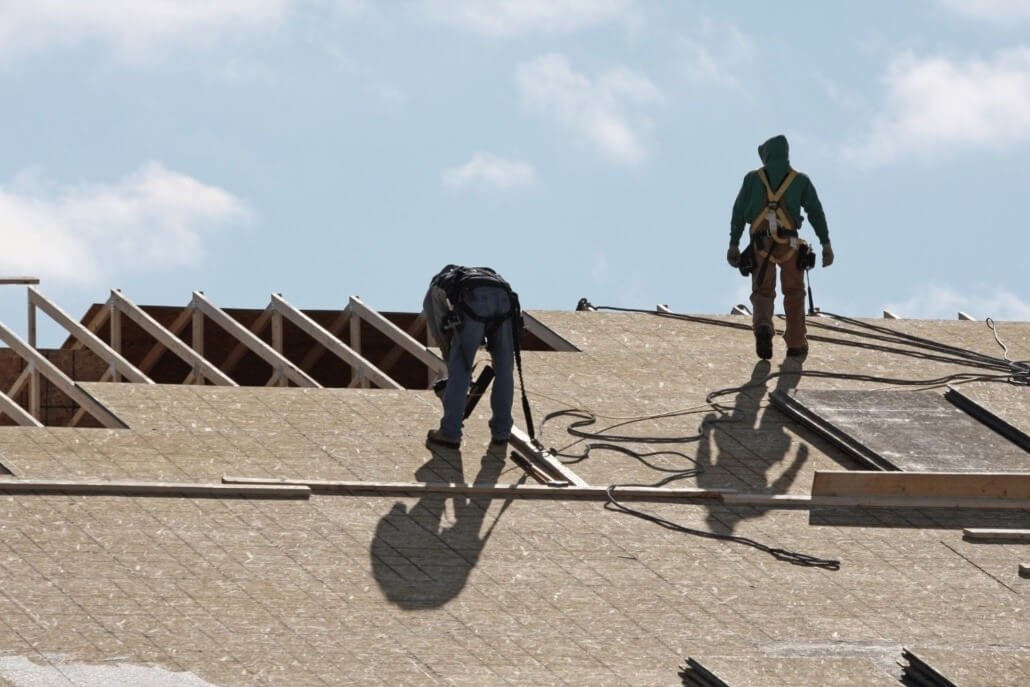
Replacing roof decking is a serious job, but a well-trained crew can often handle it in a day.
Here’s how it typically goes:
| Step | What Happens |
| 1. Tear-off | Old shingles and underlayment are stripped down |
| 2. Inspection | Decking is checked for rot, mold, or damage |
| 3. Replacement | Damaged decking is removed and replaced |
| 4. Re-sheeting | New decking panels (plywood or OSB) are installed |
| 5. Sealing | Underlayment and waterproofing barriers go on top |
How Much Does Roof Decking Replacement Cost in 2025?
Costs vary based on materials, roof size, and local labor rates.
Average Roof Decking Replacement Costs (2025)
| Roof Size (sq ft) | Estimated Cost Range |
| 1,000 | $1,000 – $2,000 |
| 1,500 | $1,500 – $3,000 |
| 2,000 | $2,000 – $4,500 |
| Per sheet (4×8 ft) | $70 – $150 installed |
Note: Costs increase if the decking is hard to access or the entire structure needs re-framing.
How Long Does Roof Decking Last?
When installed properly and kept dry, roof decking can last 30–50 years. However, its lifespan depends heavily on:
- Climate conditions
- Proper attic ventilation
- Roofing material above
- Maintenance of flashing and gutters
Cold Climate Tip: Ice dams and snow buildup can age decking quickly if not properly managed.
Final Thoughts: Why You Should Care About Roof Decking
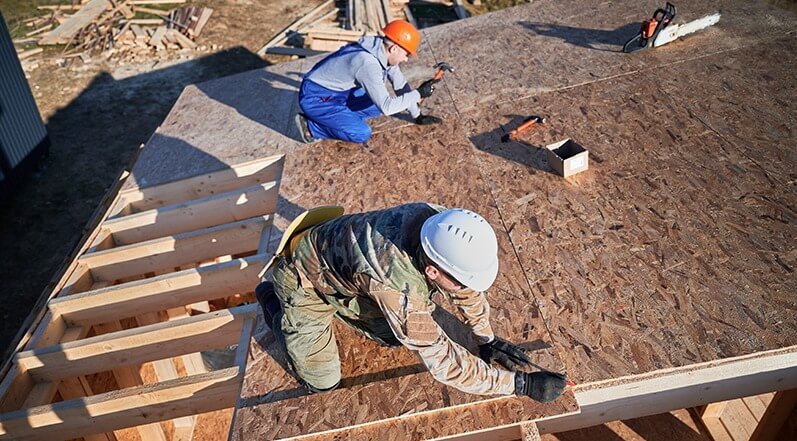
You don’t need to be a contractor to know when something’s off with your roof. But now you understand how important that hidden layer the decking really is. It’s the silent workhorse of your entire roofing system.
If your roof is older, sagging, or showing signs of leaks, make sure your contractor checks the decking during your next inspection. Don’t settle for a surface-level fix if there’s weakness underneath. A strong, reliable roof starts from the base.
Thinking of replacing your roof? Be sure to ask if your quote includes decking inspection or replacement. It’s one of the most important questions you can ask before moving forward.
If you’re in the NYC area and want the job done right the first time, S&R General Construction NYC is a trusted name for professional roof replacements and inspections. They know what to look for and they don’t cut corners when it comes to the structure beneath your shingles.
Your roof protects your home. Let the right team protect your roof.
Frequently Asked Questions About Roof Decking
What is the purpose of roof decking?
Roof decking acts as the foundation for your entire roofing system. It provides a flat, strong surface for shingles, underlayment, and flashing to attach to. It also helps support the weight of snow, rain, and foot traffic, and it ties the roof’s structure together to prevent movement or sagging.
Is roof decking always replaced during a roof replacement?
Not always. If your existing decking is still solid, dry, and up to code, it may not need replacement. However, most roofing contractors, including S&R General Construction NYC will inspect the decking once the old shingles are removed. If there’s any rot, mold, sagging, or signs of damage, they’ll recommend replacing those sections or re-sheeting the entire deck.
Can I add new shingles over old decking without inspecting it?
No, and you shouldn’t. Installing new roofing over damaged or uninspected decking is a recipe for leaks, early roof failure, and voided warranties. Always have the decking checked and repaired if needed before putting on new roofing materials.
How thick should roof decking be?
Most building codes and roofing manufacturers require decking to be at least 3/8″ thick, but 1/2″ or thicker is often preferred for better strength and longevity, especially in areas with heavy snow or wind.
Who should I call if I suspect roof decking problems?
If you’re in New York City or nearby, contact S&R General Construction NYC. They’re experienced with decking inspections, roof replacements, and structural repairs. Their team knows how to spot hidden damage and how to fix it the right way, without shortcuts.
